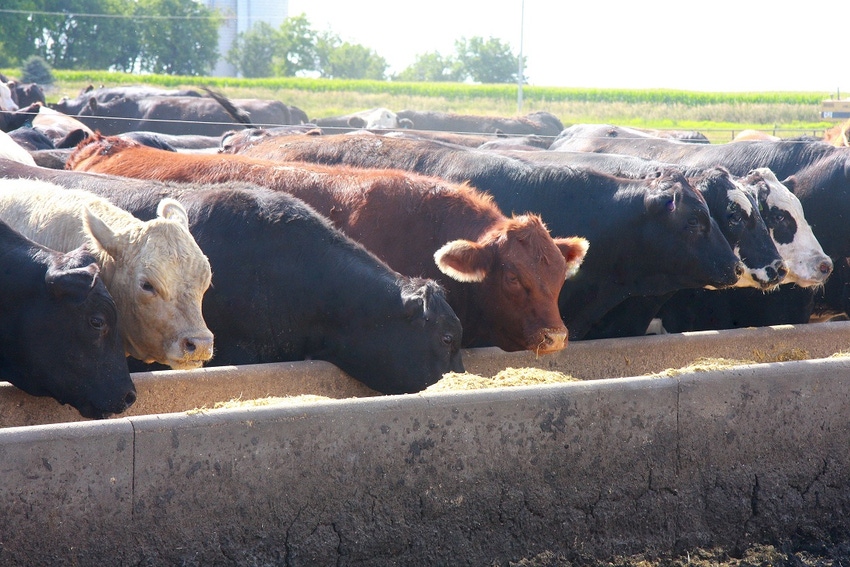Rumen fermentation of beef calves during transition not affected by diet type or by abrupt or smooth transitions.

Successfully transitioning beef calves from a pasture regimen with nursing to a high-concentrate feedlot ration is a concern for many feedlot managers. New research from Spain published in Livestock Science, questioned some common transition strategies.
Researchers S. Yuste, Z. Amanzougarene, M. Fondevila and A. de Vega with the Universidad de Zaragoza-CITA in Zaragoza, Spain, and G. de la Fuente with the Universitat de Lleida-Agrotecnio Center in Lleida, Spain, evaluated the effects of partial substitution of barley with corn and beet pulp on animal performance, rumen fermentation and rumen microbial populations in 39 newly weaned calves transitioned from a milk/pasture regime to a high-concentrate ration.
Yuste et al. noted that three diets were feed: a barley-based growing diet (control) and two diets in which barley was partially replaced with corn and 10% beet pulp (BP10) or 22% beet pulp (BP22) on an as-fed basis. Wheat straw was offered ad libitum in all cases.
The researchers said three adaptation protocols were followed: In protocol 1, animals were abruptly shifted to the control diet, whereas calves in protocols 2 and 3 were gradually adapted and received diets BP10 and BP22, respectively, for 10 days, after which a 50/50 mixture of their diet and the control diet was provided until day 14 and, finally, just the control diet after day 15. All animals were slaughtered at a target live weight of about 500 kg.
The experiment had three phases: days 0-10, days 11-14 and day 15 until slaughter.
According to Yuste et al., concentrate intake and the proportion of straw in the diet were affected (P < 0.01) by the interaction dietary protocol by phase, with animals in protocol 3 having the lowest concentrate intake and the highest straw proportion in phase 2 (days 11-14).
Daily gains, live weight at the end of each phase, dressing percentage (59%, on average) and total concentrate intake over the course of the study (about 995 kg of dry matter, on average) were all similar (P > 0.05) among adaptation protocols, the researchers said. Daily rumen pH and concentrations of lactate and volatile fatty acids were not affected by protocol.
At the end of the trial, protozoa persisted in the rumen of all calves, with an average concentration of 5.89 log cells per milliliter, Yuste et al. reported. Diversity dropped throughout the study; most protozoa belonged to genera Entodinium (97.5%) and Isotricha (1.7%), with a minor presence for Dasytricha (0.05%), Epidinium (0.43%) and subfamily Diplodiniinae (0.23%).
Yuste et al. said the adaptation protocols had no effect on rumen bacterial population or diversity; however, both were affected by day of sampling, indicating a shift in bacterial community in response to concentrate inclusion. Although diversity dropped with concentrate inclusion, there was an increase after day 10.
Yuste et al. concluded that, for this trial, the application of different protocols to adapt beef cattle to high-concentrate diets had no effect on animal performance or rumen fermentation, which were affected by the abrupt transition to a high-concentrate diet.
They suggested that calves might cope with those feeding conditions probably due to microbial adaptions to a new rumen environment.
About the Author(s)
You May Also Like

.png?width=300&auto=webp&quality=80&disable=upscale)

